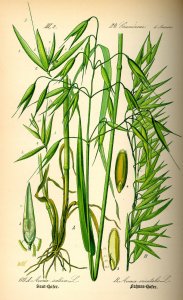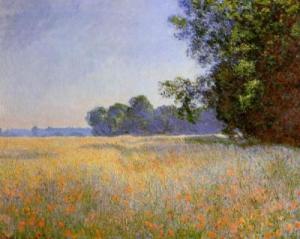The ancestor of our humble oat was a wild and uncouth relative that grew in southern Europe and western Asia. Used for animal fodder and as an ingredient in hearty dishes and baked goods, wild–and later cultivated–oats provided sustenance for Europe’s rural poor.
The Norwegians for instance consumed fish and oatmeal porridge; an ancient saga tells of a hero’s enjoyment of this dish before leaving his home: “Before I left my home, ate I in peace fish and oatmeal,” he says. The more humble folk also enjoyed some variation of this dish, partaking of it in numerous guises throughout the day. Alfred Heaton Cooper in his book The Norwegian Fjords (1907) tells us that the average Norwegian peasant followed the following daily gustatory routine: “At 6 a.m., oatmeal cake or potato cake and buttermilk; at 8 a.m.–the chief meal of the day –is served fish, and boiled, salted, or dried mutton with potatoes; at 12 midday, oatmeal porridge and buttermilk; at 4 p.m., dried, smoked, or salted fish with potatoes and buttermilk; at 8 p.m., oatmeal porridge and milk.” Though variety was lacking in this austere Nordic diet, the meals were filling and nourishing, especially when in the warmer spring and summer months vegetables were added to the menu.
Here’s an 1888 recipe for Norwegian oatmeal porridge. Serve it with cream and brown sugar or as a side for more savory dishes.
Norwegian Oatmeal Porridge

Would you rather receive The Austerity Kitchen by email? Then sign up for my Substack.
And, if you’d like to help the Kitchen keep cookin’, please consider picking up copies of my books, Why Fast? and Fermented Foods.



Uff da!
LikeLike